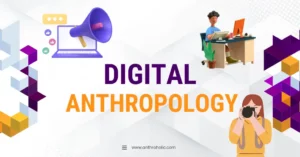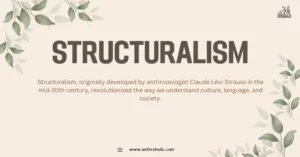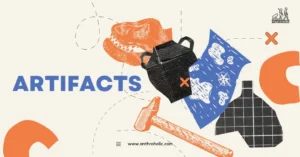AI Answer Evaluation Platform Live Now. Try Free Answer Evaluation Now
Signs Symbols and Language
Humanity’s capacity to communicate through complex symbolic systems sets it apart from all other species. The anthropological understanding of signs, symbols, and language, will shed light on how these systems shape our worldviews and cultural norms. Anthropologists examine the role and nature of symbols, signs, and languages in human societies, and explore how they function to foster understanding and cooperation among groups and individuals.

Understanding Signs and Symbols
Signs: Simple Communication
Signs are the most basic unit of communication, used to indicate a specific, typically straightforward concept or idea. The purpose of signs is to provide direction or convey a direct meaning, like a traffic sign signaling stop or go, or an emoji indicating happiness or sadness [1].
Symbols: Complex Meaning
Symbols, on the other hand, carry a more complex and nuanced set of meanings, often based on cultural context. Symbols can represent abstract ideas, ideologies, or concepts, and their interpretation varies across different cultures. For instance, the swastika is a symbol of auspiciousness in Hinduism and Buddhism, but it’s associated with Nazism and anti-Semitism in Western contexts due to its appropriation by the Nazis [2].
The Interplay Between Signs and Symbols
Despite their differences, signs and symbols often interact in everyday life. One can view symbols as an extension or evolution of signs, with a deeper layer of meaning added over time. A sign becomes a symbol when it carries additional significance beyond its immediate function or representation.
Language: The Ultimate Symbolic System
Language is arguably the most sophisticated system of signs and symbols. Each word can be seen as a sign that carries a specific meaning, and the way words combine in sentences provides a symbolic structure that conveys more complex ideas [3].
Structure and Grammar
Every language has a unique structure and set of grammatical rules that determine how signs (words) can be combined. This structure allows for the expression of an infinite array of ideas, emotions, and concepts.
Cultural Context and Language
Language also reflects the culture in which it is used. The way ideas and emotions are expressed can provide insights into cultural norms, values, and worldviews. For instance, some indigenous languages have multiple words for different types of snow, reflecting the cultural significance of snow in those societies [4].
Role of Signs, Symbols, and Language in Society
These systems of communication play a vital role in human societies, as they:
- Facilitate communication: They allow us to express thoughts, ideas, emotions, and commands.
- Foster understanding: They provide a shared framework of meaning that helps people understand each other.
- Preserve and transmit culture: They enable cultural values, norms, history, and knowledge to be passed down through generations.
- Shape worldview: They influence how individuals perceive and interpret the world around them.
Table 1: Comparing Signs, Symbols, and Language
| Signs | Symbols | Language | |
|---|---|---|---|
| Function | Indicate specific concepts or ideas | Represent abstract ideas or concepts | Express complex ideas and emotions |
| Complexity | Low | High | Highest |
| Cultural Context | Generally universal | Culture-specific | Culture-specific and universal |
Significance of Symbols in Rituals and Religion
Religion and rituals represent a sphere where symbols hold profound significance. Sacred symbols, whether objects, text, or actions, can embody religious concepts or narratives, bridging the divine and the human world.
Ritual Symbols
Rituals often use symbols to represent abstract concepts such as purity, transformation, or sacrifice. These ritual symbols help participants to experience these abstract concepts in a tangible way. For instance, the Christian ritual of communion uses bread and wine as symbols of the body and blood of Christ, which believers consume to participate symbolically in the sacrifice of Jesus.
Religious Symbols
Religious symbols, like the cross in Christianity or the crescent moon in Islam, often carry deep theological meanings. They serve to remind adherents of their religious beliefs and identity. However, their interpretation can differ across cultures or branches of the same religion, underlining the cultural specificity of symbols.
Symbols, Language and Identity
Symbols and language also play a crucial role in shaping personal and group identities. They are essential in defining ‘us’ versus ‘them’, and in expressing and sustaining cultural, national, or group identities.
Language and Identity
Language is a powerful identity marker. It not only reflects a person’s cultural background but also their social identity. The choice of language or dialect, accents, or specific vocabularies can indicate one’s socioeconomic status, education level, ethnic identity, or regional affiliation.
Symbols and Identity
Symbols are often used to represent group identities. Flags, national anthems, or even certain clothing styles can symbolize a particular national, ethnic, or social group. These symbols can foster a sense of belonging among group members and distinguish them from others.
Table 2: Symbols and Language in Different Domains
| Domain | Symbols | Language |
|---|---|---|
| Religion and Rituals | Sacred objects, ritual actions | Sacred texts, prayers |
| Identity | Flags, clothing, logos | Language/dialect, accents |
Conclusion
The interplay of signs, symbols, and language offers a fascinating lens to understand the complexities of human culture and social interaction. By delving into the world of symbols and language, we gain insights into how humans create meaning, shape identities, and negotiate their social realities.
References
[1] Saussure, F. (1916). Course in General Linguistics.
[2] Heller, S. (2008). The Swastika: Symbol Beyond Redemption.
[3] Chomsky, N. (1957). Syntactic Structures.
[4] Krupnik, I., & Muller-Wille, L. (1998). Franz Boas and Inuit languages.




